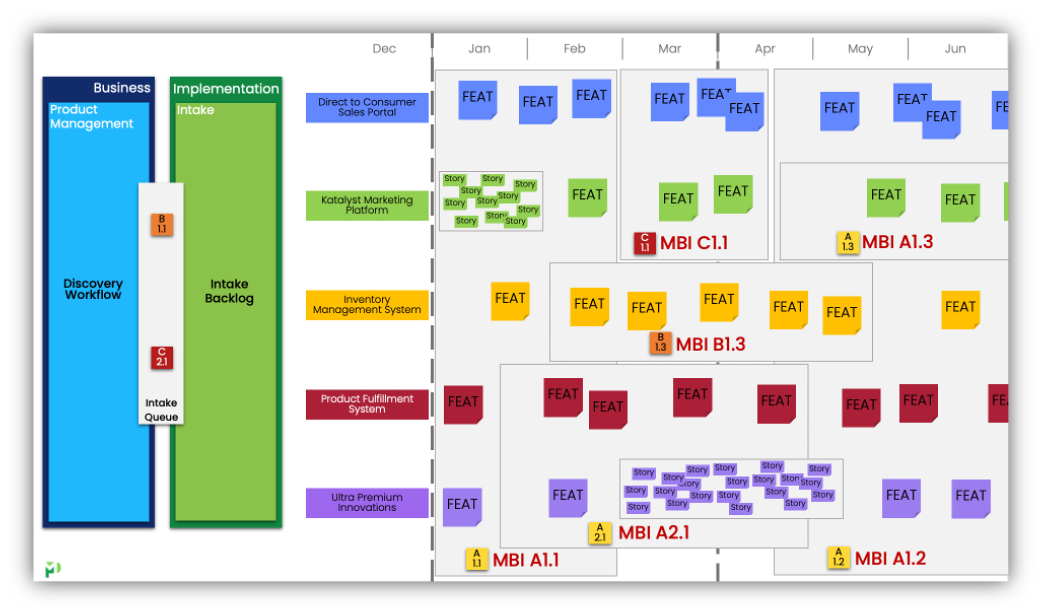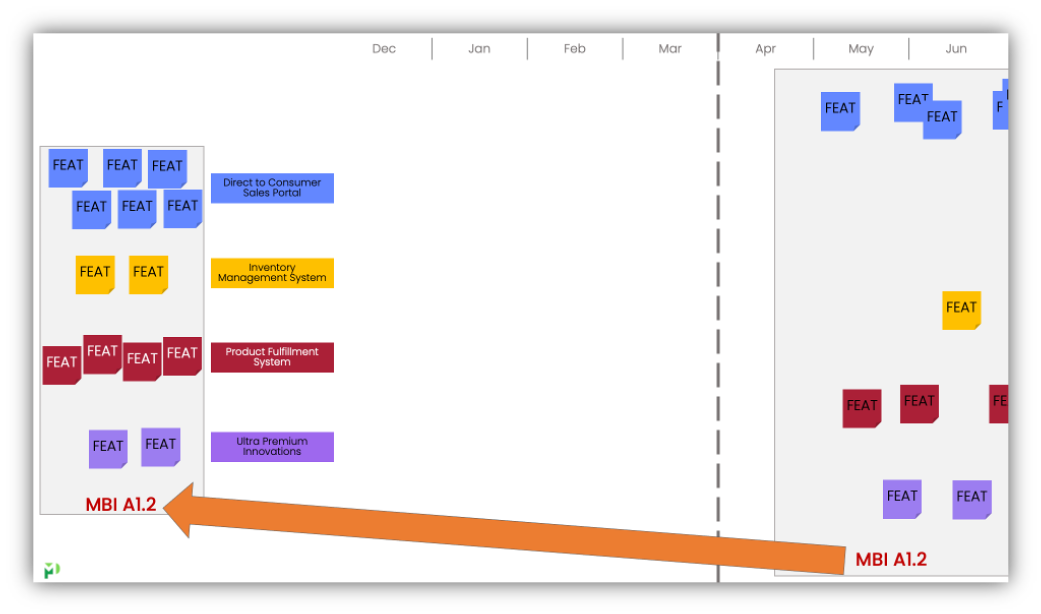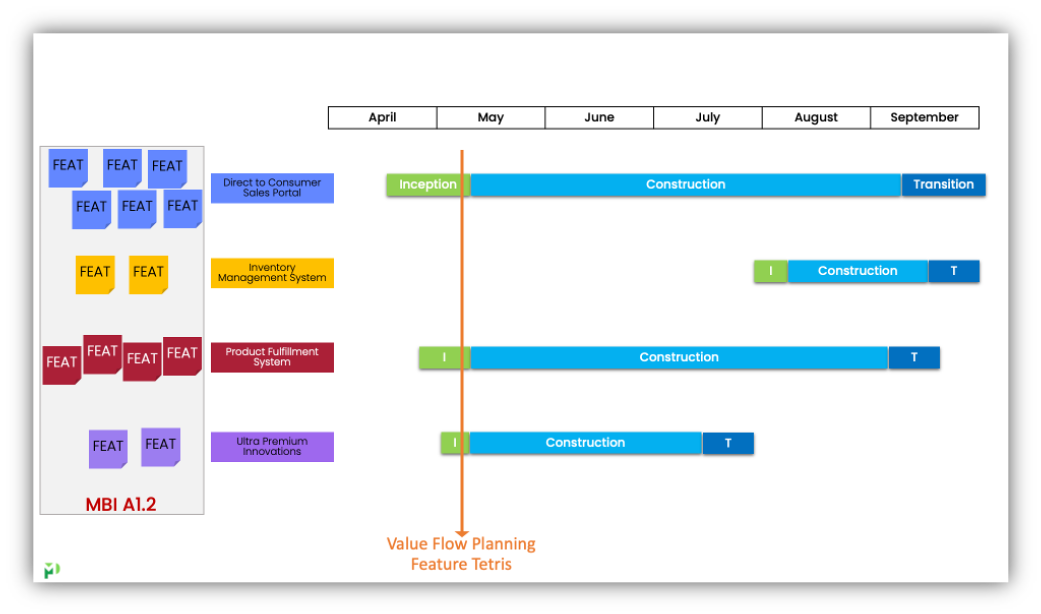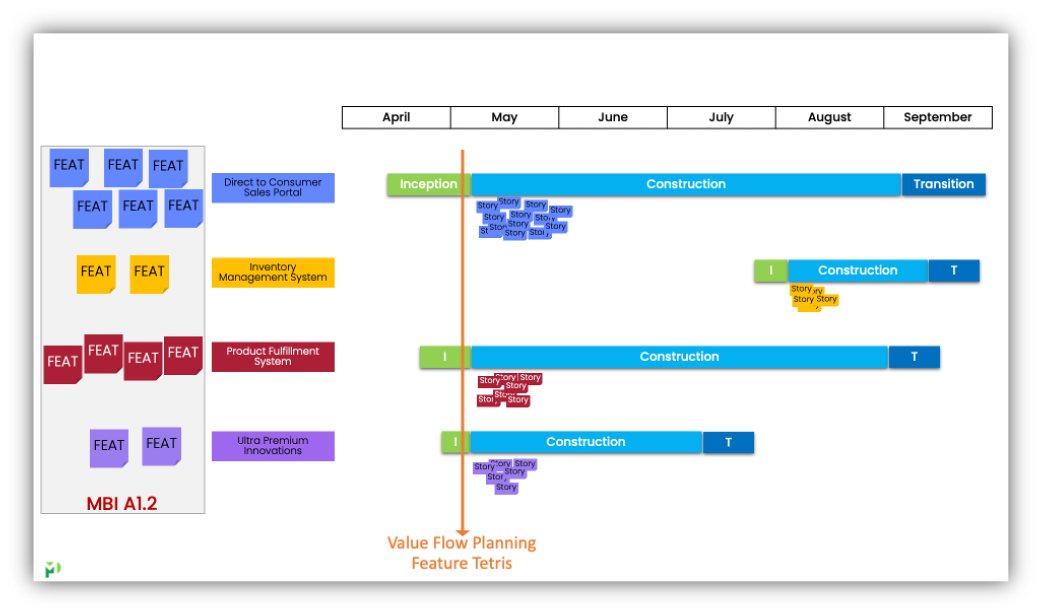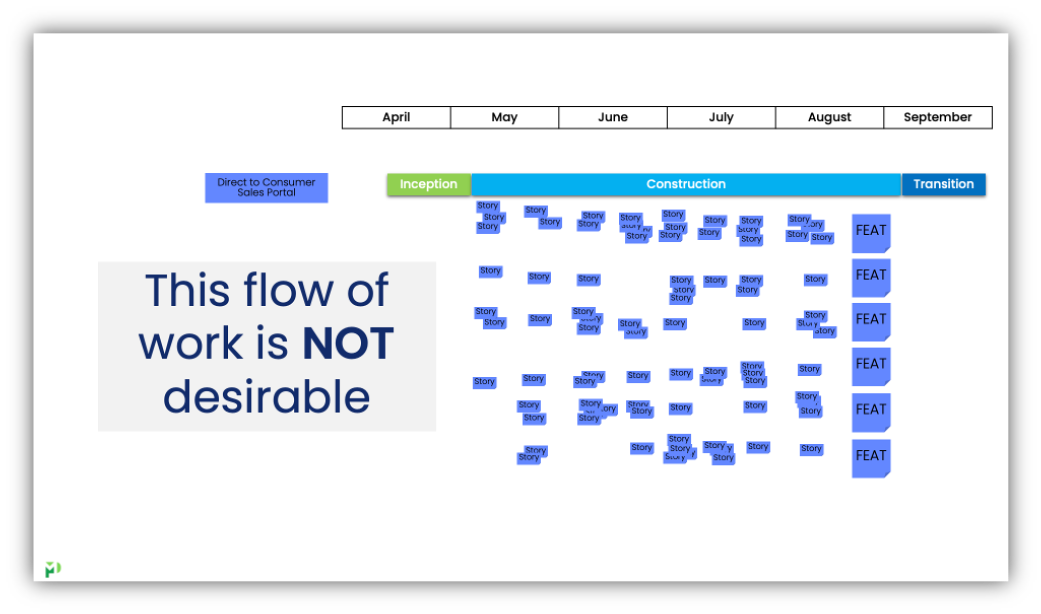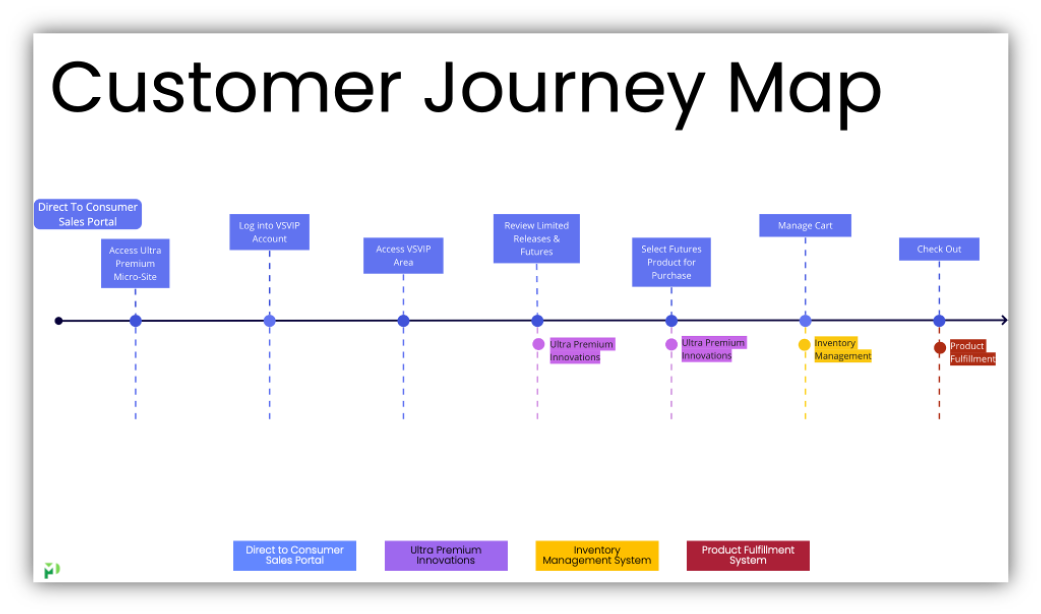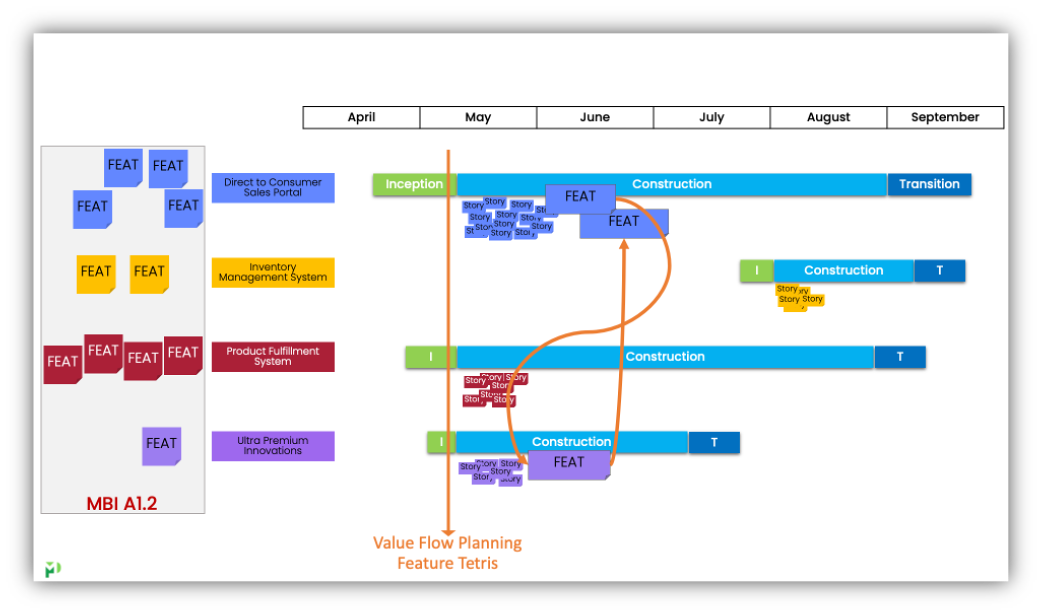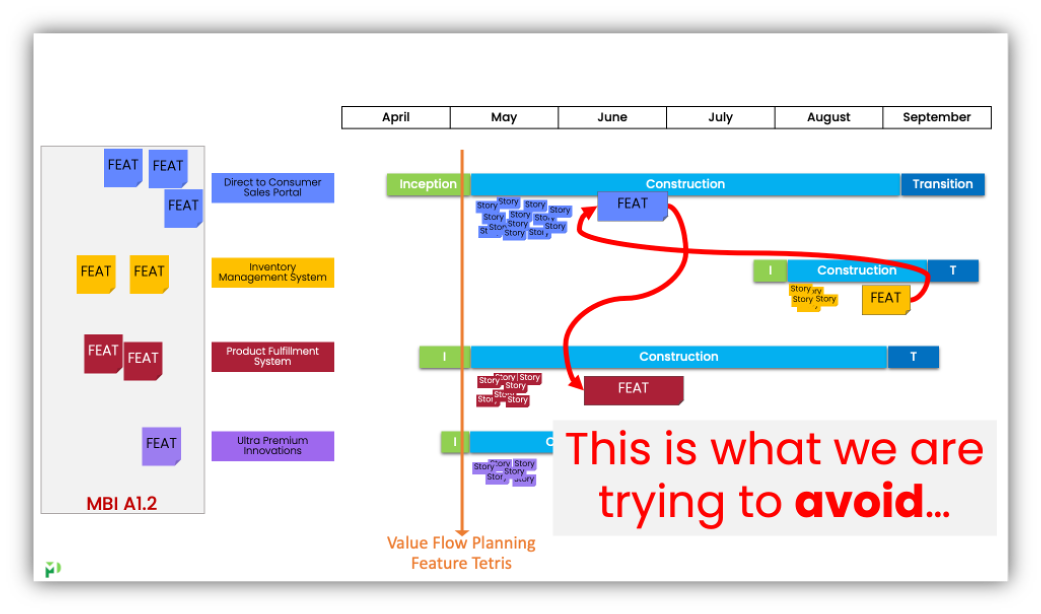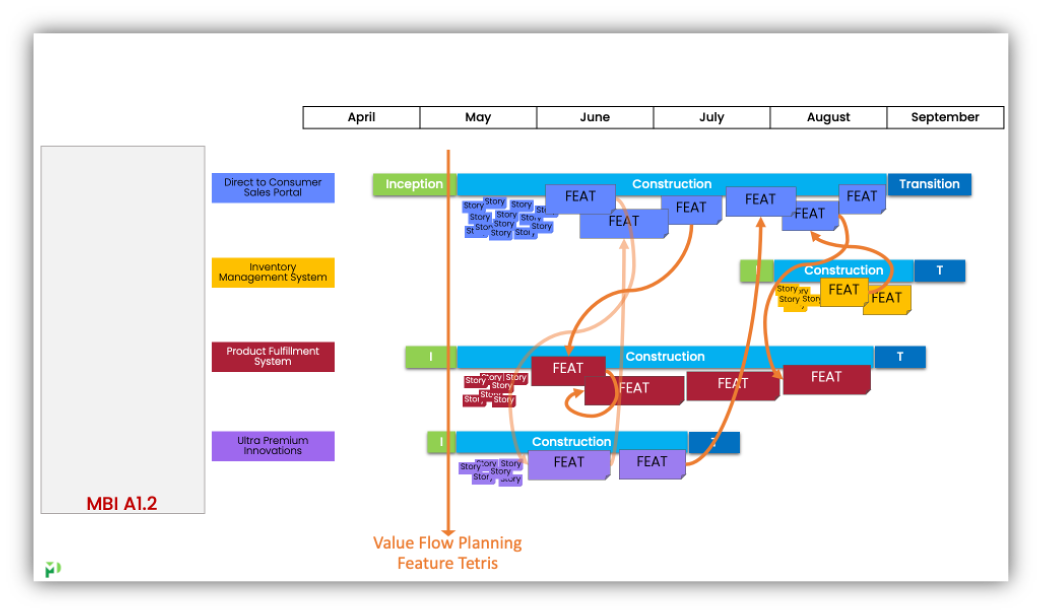
How do we maximize the flow of value delivery for a Minimum Business Increment? Conduct a type of Value Flow Planning I call Feature Tetris.
In the Look Ahead Value Flow Planning article, I covered a type of Value Flow Planning I call MBI Tetris. It is a dynamic way to explore how to deliver the maximum value over a time period, such as quarterly. The power of this technique is that it brings to life via visualization what is possible. Figure 1 is an example outcome from MBI Tetris.
Figure 1: Look Ahead Value Flow Planning
Is that where value flow planning stops? No way! We can use this approach to plan the flow of work to implement an MBI. Similar to MBI Tetris, I will focus on the Development Value Stream to manage the complexity and size of the graphics for this article. In using this technique, depending on the value-adding activities required from the Operational or Support Value Steams, they must be part of this planning.
I am using a complex MBI with multiple enhancements in multiple products delivered by multiple teams. Figure 2 shows the example MBI.
Figure 2: Example Complex MBI
In this example, all teams use the Agile Lifecycle (iterative). The Direct to Consumer Sale Portal team, Product Fulfillment System team, and Ultra-Premium Innovations team start at approximately the same point in time. The Inventory Management System team began their contribution to the value of this MBI a few months later.
The timing of Value Flow Planning for this MBI is shown in Figure 3. Three of the teams are nearing the end of their respective Inception Phase. They have explored the scope of the MBI via decomposing the features via identifying stories. At this juncture, they have an adequate understanding of the work.
The fourth team, Inventory Management System, does not initiate their Inception phase for a few months. To prepare and participate in this planning, the Product Owner and Architecture Owner complete some pre-inception work to explore the scope minimally they will deliver and identify risks and dependencies.
Figure 3: Where Value Flow Planning – Feature Tetris is Conducted
The first step of this planning is to bring on to the planning board the stories that the Architecture Owners and Product Owners identify as needed to implement first. These stories are the ones that have significant risks (such as integration, something new or novel, uncertainty, etc.). Then, using the Disciplined Agile risk-value approach to prioritization, there is a high level of confidence (at least at this point) that once these stories are implemented, the initial milestone in the Construction Phase, “Proven Architecture,” will be accomplished. Figure 4 visualizes the forecasted portion of each team’s Construction Phase for this.
Figure 4: Achieve Milestone – Proven Architecture
The next step is where we plan via Feature Tetris. Before I begin pulling features onto the planning board, figure 5 shows a scenario that is not desirable that Value Flow Planning eliminates. This undesirable outcome applies to a complex MBI such as the example of this article or a less complex one where a single team is enhancing a single product.
Implementing features in this approach has many undesirable attributes:
- Delays feedback on the features from an end-to-end perspective.
- Delays feedback on how a customer may interact with the functionality of one feature to another feature.
- If changes are requested or bugs found when end-to-end usage can be explored, due to the long span of time to implement each feature, it will most certainly be more costly to make changes due to the passage of so much time.
Figure 5: Undesirable Flow of Work
We have many options for practices and techniques we can put into action during the discovery workflow for MBIs. One that I highly recommend is to create customer journey maps. These maps help to understand how customers will interact with the existing product functionally and the enhancements. Figure 6 is one of the customer journey maps developed while our example MBI was going through the discovery workflow. We utilize it in our Feature Tetris.
Figure 6: Customer Journey Map
Utilizing the Customer Journey Map, the teams collaborate on how this MBI can be delivered. Figure 7 shows features pulled onto the planning board. Value to a customer requires the completion of these three enhancements. Based on the capacity of these two teams, completing these features as soon as possible yields critical feedback opportunities.
The features sized by the teams doing the work represent a rough estimate of the time required. Visual representation of the time is compelling; anyone looking at this planning board can immediately recognize this.
Figure 7: Pulling Features onto the Planning Board
Using a Value Flow Planning board and Feature Tetris, we avoid (as best we can) scenarios represented in figure 8. The value to the customer in this example requires enhancements in three products. The functionality of the feature in the Inventory Management System is needed as an input to the functionality in the Direct to Consumer Sales Portal feature. This type of delay is similar to what I covered in figure 5.
Figure 8: We Avoid this with Value Flow Planning
We continue to pull features onto the planning board and explore different combinations, hence my reference to the Tetris game. Figure 9 shows the outcome of this Value Flow Planning. Not all features have a relationship across the products; however, where they do exist, we can very easily recognize them.
The sizing of the features and the placement in time on the planning board may be rough estimates, but they are sufficient to plan how these teams can implement their respective value-adding activities. Please remember the note I had early in this article; we also include those from the Operational and Supporting Value Streams.
Figure 7 is an excellent example of functionality that the Marketing Team will benefit from exploring and utilizing in the digital and print assets needed for the marketing campaign.
Like MBI Tetris, visualizing the planning via Feature Tetris brings to life planning uniquely and powerfully.
Figure 9: Feature Tetris Completed
For additional information, I did a LinkedIn Live stream on this topic: ATDA Miniseries Ep 6 of 12: Value Flow Planning – Feature Tetris

We help implement lean and agile methodologies to streamline processes in a context-sensitive manner.
Quick Links
Latest Posts
All Things Value Delivery Management – Value Flow Factor 1: Small Items
Is the size of work the minimum scope to provide value a customer can consume? In most cases, the answer is no. However, whether it is a project, business case, charter, work package, epic, etc., we can almost always identify a minimum business increment. Relentless...
Project Manager to Value Delivery Manager
Here we have a common problem. The “agile team” comprises a product owner, team coach, and team members. Far too often, I hear something like, “there are no project managers in agile.” Agile teams are empowered to make decisions and determine how to get the work done....

